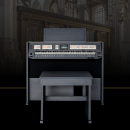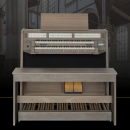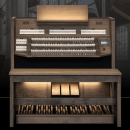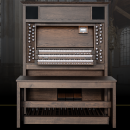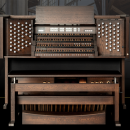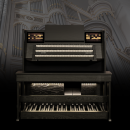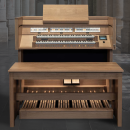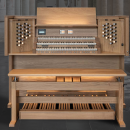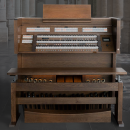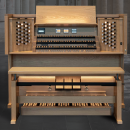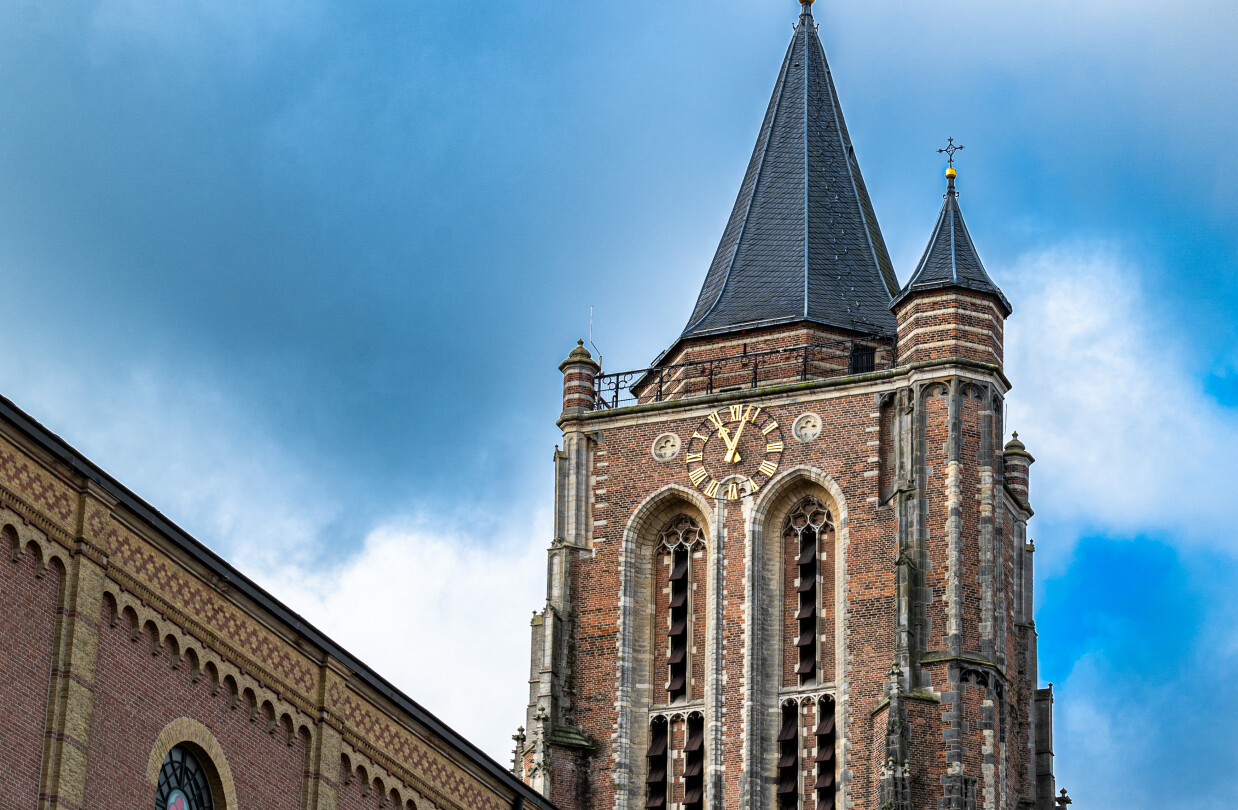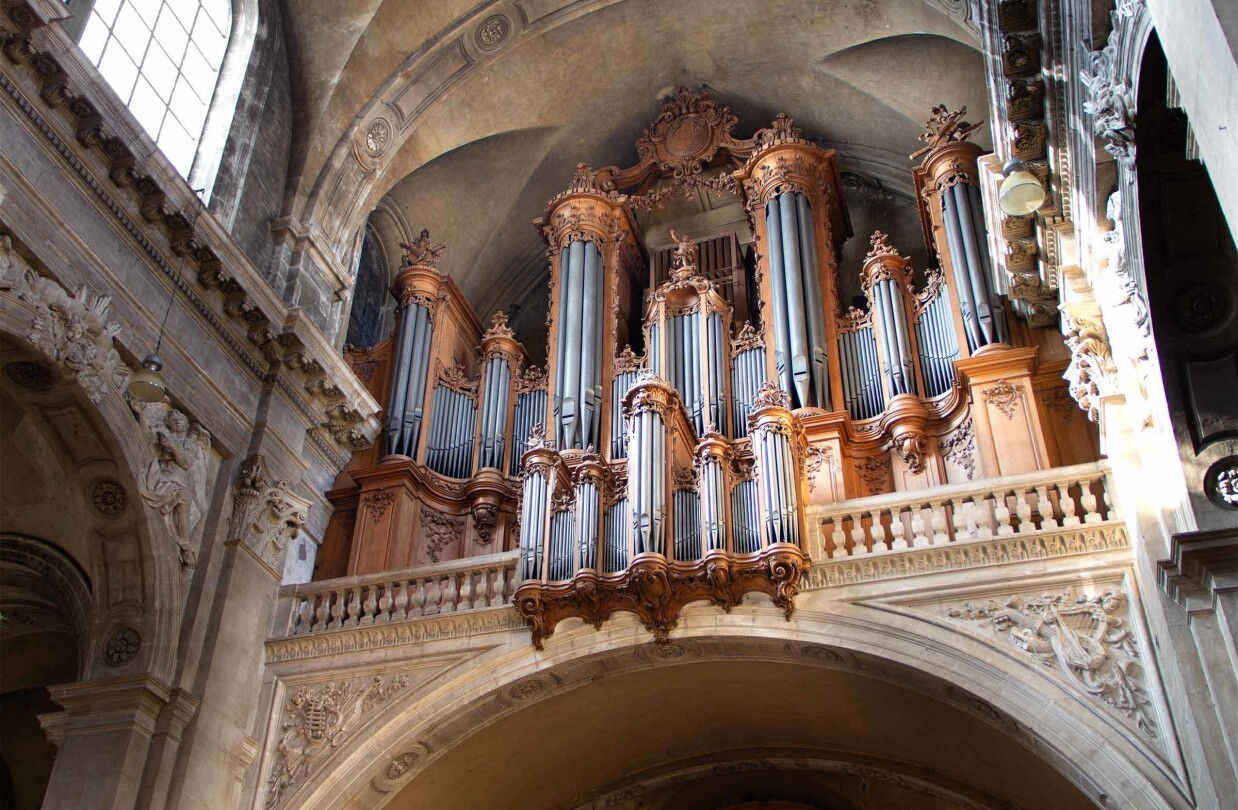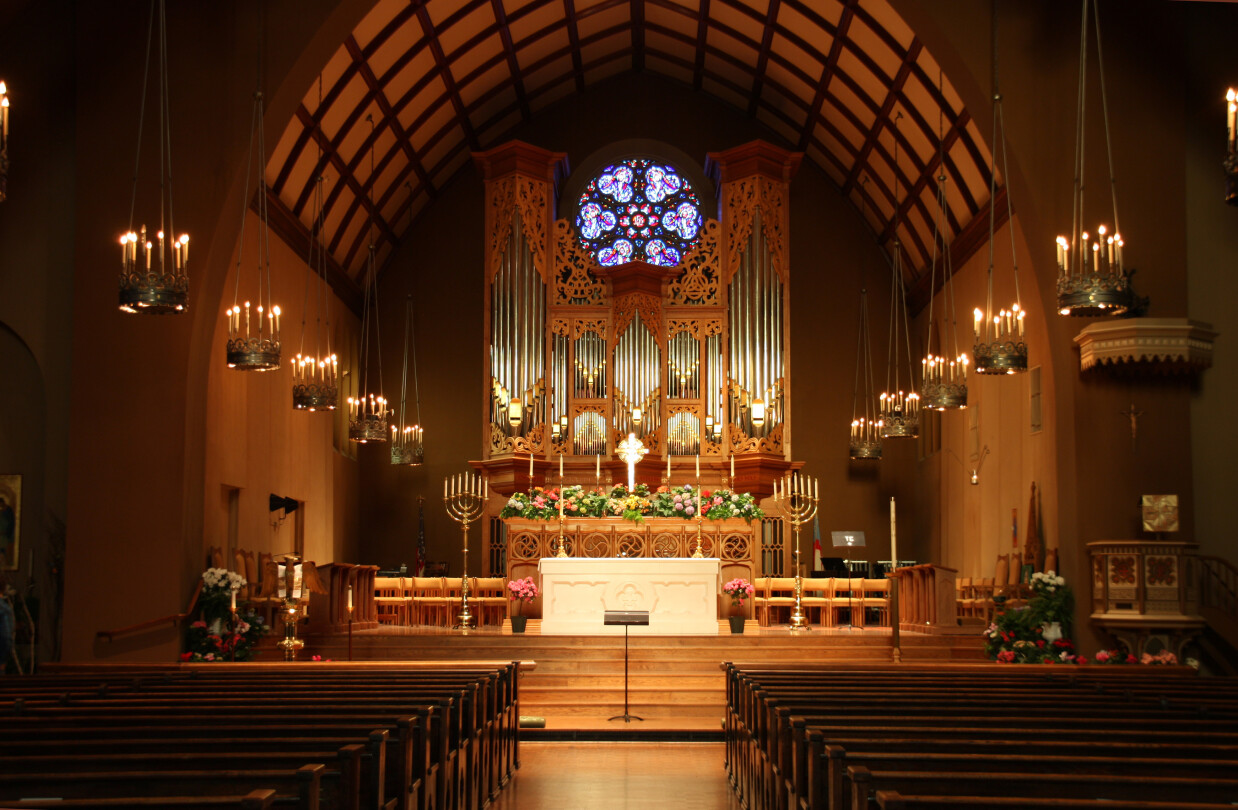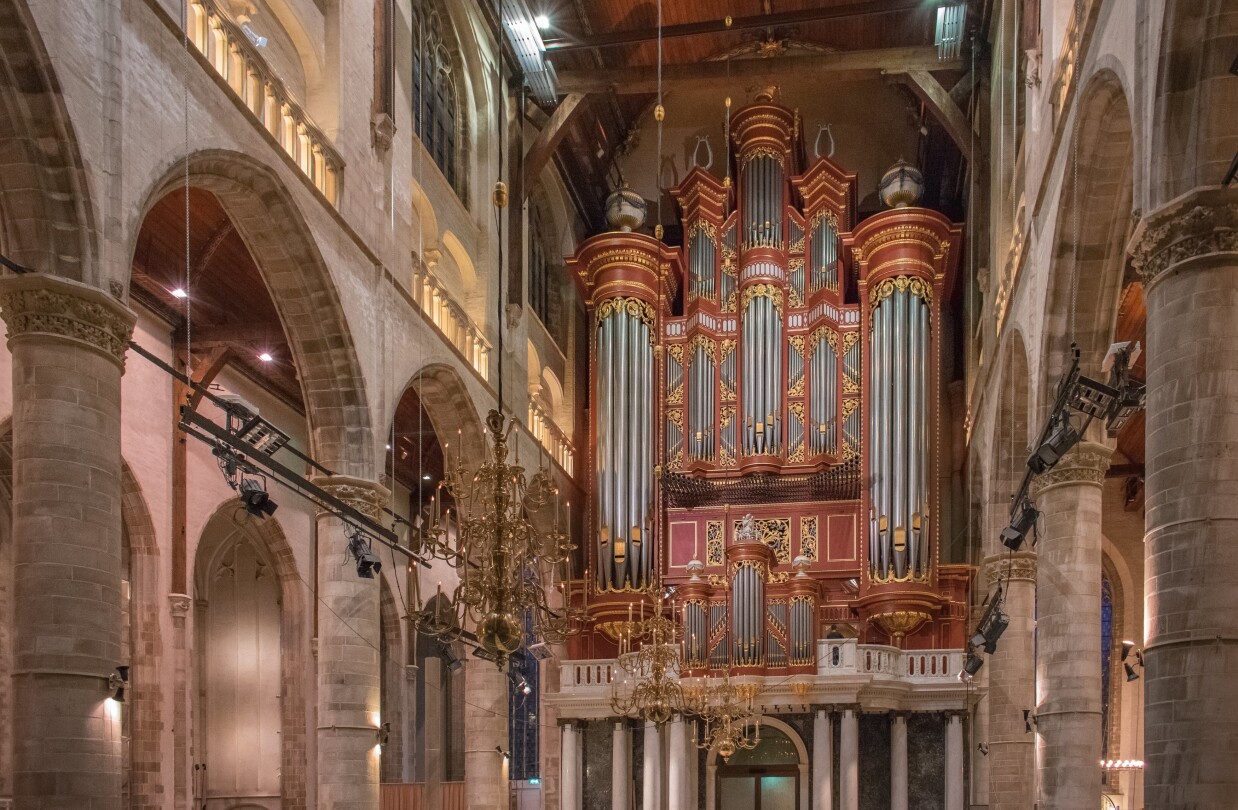Gorinchem Grote Kerk
The Bätz-Witte organ, with its initial design dating back to 1851, is the first three-manual organ with a Rückpositiv realized by C.G.F. Witte. It also represents his first design in the so-called 'round arch style.' The facade is inspired by a design for a new organ in the Zuiderkerk in Rotterdam (1850). The three statues on the main case were crafted by the Utrecht sculptor Joannes Rijnbout.
During the organ's construction, a significant amount of pipework from the organ built by Johann Heinrich Hartmann Bätz in 1761 in the previous church was utilized. Bätz had, in turn, used pipework made by Stephanus Cousijns in 1666. The pipework of the Hauptwerk and Oberwerk largely dates back to 1761, with the reed stops of the Hauptwerk and Oberwerk featuring resonators, heads, and boots from the same year.
Restoration
In the fall of 2007, the restoration plan, formulated a few years earlier by the State Organ Advisor, Jan Bonefaas, and Ton van Eck, was initiated. Simultaneously with the restoration of the Oberwerk, a swell box was added, allowing for a more authentic performance of organ repertoire from the second half of the 19th century, also executed by the firm Pels & Van Leeuwen.
In April 2010, a comprehensive restoration of the instrument began by the firm Pels & Van Leeuwen, with Ton van Eck as the advisor. Initially, there was necessary technical repair to the wind chests and register action, affected by climatic influences over the past decades. Additionally, tonal restoration took place.

Gorinchem Grote Kerk
Specifications
General
- Bätz-Witte, 1853
- 3 manuals
- 44 stops
